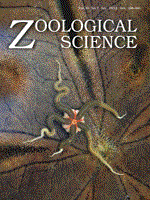The present study aims at assessing allometric relationships in the Sigmodontinae rodents (Calomys tener, Akodon cf. montensis, Necromys lasiurus, Oligoryzomys flavescens, and Oligoryzomys nigripes), and morphological variation among different habitats in human-dominated environments in Southeastern Brazil. We captured rodents using pitfall traps placed in Eucalyptus plantations, abandoned pastures, and remnants of secondary native vegetation, and took the following measurements: body mass, total length, body length, left hind foot length, and left ear length. Males were usually larger than females, except in N. lasiurus. There was no intraspecific difference in body condition among habitats, suggesting that Eucalyptus may not have a deleterious effect upon its residents. However, A. cf montensis from Eucalyptus plantations had longer feet than those from other vegetation associations, suggesting a possible adaptive response to the lower cover in the plantation environment, and its consequent higher predation risk, or alternatively that only individuals with greater dispersal ability are found in Eucalyptus plantations. Future studies should investigate a possible co-evolutionary predator-prey relationship, including rapid evolution by Sigmodontinae rodents in anthropogenic landscapes.
How to translate text using browser tools
1 July 2013
Allometric Relations of Neotropical Small Rodents (Sigmodontinae) in Anthropogenic Environments
Luís M. Rosalino,
Paula S. Martin,
Carla Gheler-Costa,
Paula C. Lopes,
Luciano M. Verdade
ACCESS THE FULL ARTICLE

Zoological Science
Vol. 30 • No. 7
July 2013
Vol. 30 • No. 7
July 2013
allometry
body condition
Eucalyptus plantations
Morphometrics
sexual dimorphism




